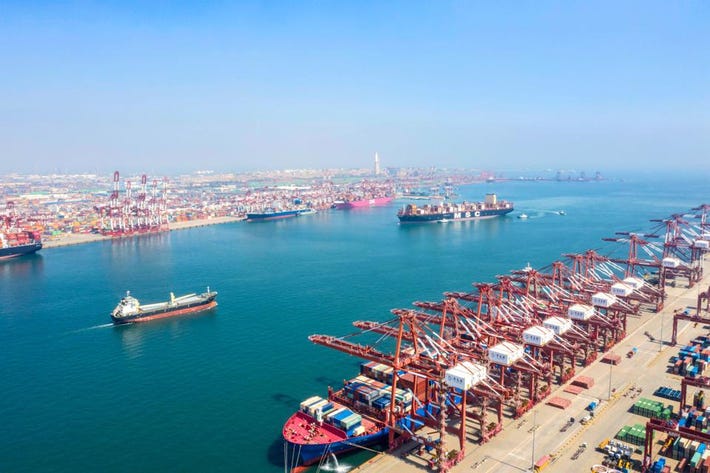
Middle East crisis : Amid supply chain stress, India looks to augment shipping fleet, container manufacturing
DUBAI : The World Bank’s trade watch report, released earlier this week, stated that global supply chain stress remained elevated through September 2024, amid disruptions in West Asia, the Mediterranean, and Asia, as shipping rates stayed “more than twice as high” as a year ago.
“There is a clear recognition at higher levels of the need to boost the shipping fleet and improve container manufacturing. Interministerial efforts involving commerce, shipping and finance for the same are ongoing. Today, our exports stand at $450 billion. China was at $450 billion in 2004. It took them two decades to surpass $3 trillion. Fleet and container capacity building came at a certain stage of growth, and for India, that growth phase is coming now,” a senior official said.
The widening of the conflict with Iran’s direct involvement could impact Indian exports, especially low-margin, high-volume products such as textiles, another official said. Meanwhile, the World Bank’s trade watch report, released earlier this week, stated that global supply chain stress remained elevated through September 2024, amid disruptions in West Asia, the Mediterranean, and Asia, as shipping rates stayed “more than twice as high” as a year ago.
“Higher freight rates have been absorbed by buyers and sellers until now. Going forward, much will depend on how the conflict unfolds. One key concern has been the impact on petroleum imports, but it has been limited as our petroleum imports are well-diversified,” the official said.
The World Bank’s Global Supply Chain Stress Index, which tracks delayed shipping capacity, jumped to 1.4 million twenty-foot equivalent unit (TEUs) in September 2024, up 72 per cent from October 2023, when Hamas’s attack on Israel ignited renewed conflict in West Asia.
“The Israel-Hamas conflict was isolated to an extent, but the widening conflict with Iran’s direct involvement could impact Indian exports, especially for low-margin, high-volume products such as textiles. Indian exports have almost completely moved to the Cape of Good Hope route,” another official said.
Since the Red Sea crisis began, Indian exporters have been asking the government to push for developing an Indian shipping line of global repute. The request comes as India’s outward remittance on transport services is increasing with rising exports. In 2022, traders remitted over $109 billion as a transport service charge.
Exporters said that an Indian shipping line would “reduce arm-twisting” by foreign shipping lines, particularly of Indian micro, small and medium enterprises (MSMEs).
Notably, global shipping lines are seeing their profits soar amid the Red Sea crisis. Danish company Maersk, seen as a barometer of world trade, in August raised its profit forecast for the third time since May, citing higher freight rates due to the Red Sea crisis and solid container shipping demand.
“Shipping costs peaked in July 2024 at levels last seen in 2022 but declined rapidly thereafter. By September, they had fallen by almost 40 per cent from July 2024, returning to January 2024 rates, although they remained more than twice as high as at the end of 2023,” the World Bank said.
The World Bank trade watch report noted that conflicts in West Asia contributed to shipping disruptions as far away as East Asia.
“Carriers moving cargo between Europe and Asia have rerouted container vessels around Africa to avoid Houthi attacks in the Red Sea, adding up to 6,500 kilometres and 10 days to a typical journey. As a result, more cargo is being unloaded at major transshipment hubs like Shanghai to be reloaded onto smaller vessels, causing congestion elsewhere, notably in Sri Lanka and Malaysia,” the report said.
Moreover, in September, Typhoons Bebinca and Pulasan halted terminal operations and forced containerships to wait at anchorages in Shanghai and Singapore. These storms contributed to making Southeast Asia and the China Sea among the biggest sources of supply chain stress in the six months from March to September 2024, the report added.
Source : New Indian Express

